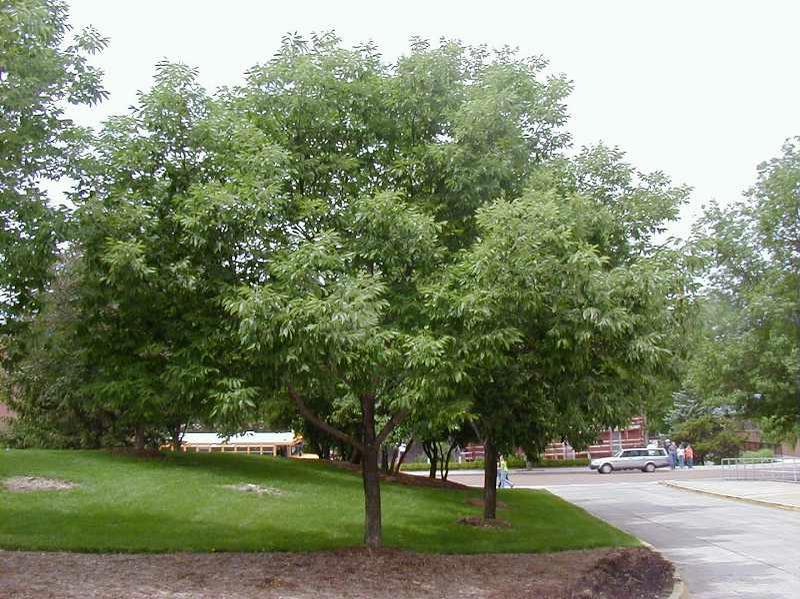Overview
Latin name: Fraxinus americana
Common name: white ash
Abbr: Fam
Taxonomy: Oleaceae/Oleeae/Fraxinus
References: NCBI:txid38872
Level: Scaffold
Chromosome number: 2n=2X=46
Genome size: 642.6 Mb

Introduction: Fraxinus americana, commonly called white ash, is native to eastern North America. In Missouri, it typically occurs in dry and rocky upland woods, glades and moist low woods along streams, bluffs and slopes throughout the state (Steyermark). This is the largest of the native ashes, typically growing 60-80’ tall. Young trees are pyramidal in shape, gradually maturing to a more rounded crown. White ash is primarily dioecious (separate male and female trees). Clusters of apetalous purplish male and female flowers appear on separate trees in April-May before the late-to-emerge foliage. Fertilized female flowers give way to drooping clusters of winged samaras (to 2” long) that ripen in fall and may persist on the tree throughout winter. Features odd-pinnate compound leaves with 7 leaflets (less frequently 5 or 9). Oval to oblong-lanceolate leaflets (3-5” long) are dark green above and whitish green below. Foliage turns yellow with purple shading in fall. Gray bark develops distinctive diamond-shaped ridging on mature trees. White ash is a valuable timber tree. Its wood is commercially used for a variety of products including tool handles, oars, garden furniture and sports equipment. White ash is the wood used for Louisville Slugger baseball bats.
height: 60.00 to 80.00 feet
Bloom Time: April to May
Flower: Showy
Leaf: Good Fall
Culture: Best grown in moist, organically rich, well-drained loams in full sun. Moderate drought tolerance. Best sited in locations protected from strong winds. Generally tolerant of urban conditions, particularly if well-sited in the landscape. Tolerant of neutral to slightly alkaline soil conditions.
Uses: Planting new ash trees is no longer recommended given the susceptibility of this tree to the emerald ash borer. Ash trees have typically been used over time in a variety of applications including shade tree, street tree or lawn tree.
Information sources: PlantFinder